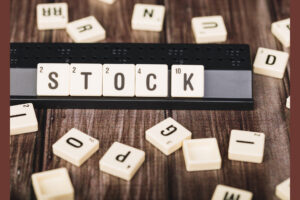How to Balance Risk and Reward in Your Investment Portfolio
Investing often feels like a balancing act. On one side, you want your money to grow faster than inflation. On the other, you don’t want to risk losing it all. That’s where balancing risk and reward comes in. Finding this sweet spot is what separates a calm, confident investor from one who’s constantly panicking at market swings.
Let’s break this down step by step with simple examples.
Why Balance Matters
Every single investment has some level of risk. Yes, even your good old savings account!
- Stocks can give you great returns, but they can also drop 20% in a month if markets crash.
- Bonds are safer, but their returns usually stay modest.
- Real estate grows steadily over time but can be illiquid (you can’t sell a house overnight if you need cash).
- Cash and Savings Accounts keep your money safe, but inflation slowly eats into it.
Imagine if you invest everything in stocks, your money could double in 5 years—or crash in half overnight. On the other hand, if you keep everything in a savings account, your money will feel safe, but in 10 years, it may not even buy you the same basket of groceries because of inflation.
The key is not going “all in” on either extreme. Balance helps your money grow while still keeping you protected.
Diversify Your Investments
Think of diversification like a thali (platter) meal. You don’t just eat rice or only dal—you take a little bit of everything. That way, even if one dish is too salty, the others balance it out.
- Stocks: High growth potential, but risky.
- Bonds: Steady, safer returns (like government securities).
- Real Estate: Can appreciate over time, plus rental income.
- Cash/Savings: Instant liquidity, safety net.
Example: If you invest ₹10 lakhs and put ₹6 lakhs in stocks, ₹2 lakhs in bonds, ₹1.5 lakhs in real estate (RITS), and ₹50k in savings, even if stocks take a temporary hit, the other investments cushion the blow. Diversification doesn’t eliminate risk completely—it just makes sure you’re not betting your entire future on one card.
Set Clear Financial Goals
Investing without goals is like driving without knowing the destination. You might end up somewhere, but it may not be where you wanted to go.
Ask yourself:
- Do I want to buy a house in 10 years?
- Do I want my kid’s college fund ready in 15 years?
- Do I want to retire at 50 and travel the world?
Example: If your goal is to save for your child’s education in 10 years, you might choose a mix of equity mutual funds and debt funds. But if you’re saving for a new phone in 12 months, a simple recurring deposit (RD) works better.
Clear goals help you decide how much risk you should take.
Assess Your Risk Tolerance
Risk tolerance is basically your comfort level with market ups and downs.
- Young investors (20s–30s) usually can afford to take more risks. If the stock market dips, they still have decades to recover.
- Older investors (50s–60s) usually prefer stability since they’ll soon need the money for retirement.
Example: If your ₹5 lakh investment dips to ₹4.5 lakh in a market crash, will you:
a) Stay calm, knowing it will recover?
b) Panic and sell everything at a loss?
If you choose (a), you have high risk tolerance. If it’s (b), you should stick to safer investments.
Stay Consistent, But Flexible
Investing is like working out. The results don’t come overnight—you need to stay consistent. Don’t panic-sell when markets crash or over-buy when markets rally. At the same time, be flexible. Life changes, and so should your portfolio.
Example: A 25-year-old may have 80% in stocks. By the time they hit 45, they might reduce it to 50% and put more into bonds for stability.
Also, if new opportunities come up—like AI or renewable energy—you can allocate a small part of your portfolio to explore them without risking everything.
Keep Costs in Check
When it comes to investing, costs are the silent wealth-killers. Every rupee you spend on fees is a rupee that doesn’t get the chance to grow for you. Every rupee you pay in fees is a rupee less in your pocket.
- Mutual funds often have hidden expense ratios.
- Frequent trading incurs brokerage charges.
- Financial advisors may charge hefty commissions.
Imagine you invest ₹5 lakhs in a mutual fund that charges a 2% fee every year. That’s ₹10,000 gone annually—even if your fund doesn’t grow. Over 20 years, you’ll lose a few lakhs to fees alone. That’s money that could have been compounding for you instead.
Solution? Use low-cost index funds or ETFs. They do the job quietly without eating up your returns.
Don’t Chase Trends
FOMO (fear of missing out) is an investor’s worst enemy. Just because everyone is talking about crypto, AI stocks, or gold doesn’t mean you should put all your money there.
Many people bought Bitcoin at ₹50 lakh in 2021, only to see it crash below ₹20 lakh in 2022. Those who chased the hype without understanding it lost money.
Stick to your long-term strategy. Remember the saying: “Slow and steady wins the race.”
Stay Educated
The investment world keeps changing. New industries rise, economies shift, and government policies change. Staying informed helps you avoid bad decisions. Like knowing about inflation trends or RBI’s interest rate policies can help you decide whether to invest more in bonds or equities. And the thing is you don’t need to be a finance geek. Even 15–20 minutes of reading market news or blogs daily is enough to stay ahead.
The Power of Patience
Here’s the golden rule: wealth grows with time, not shortcuts. Compounding is like magic—but it needs years to show its effect.
If you invest ₹10,000 every month for 10 years at a 12% annual return, you’ll end up with roughly ₹23 lakhs. But if you continue for 20 years, your wealth jumps to about ₹1 crore.
Notice the difference? The first 10 years gave you ₹23 lakhs, but the next 10 years added ₹77 lakhs more. That’s compounding at work—the later years are where the real magic happens. So don’t withdraw your investments too early. Be patient, stay invested, and give your money time to grow. The longer you wait, the bigger the corpus becomes.
Final Thoughts
Balancing risk and reward is about combining both smartly. At the end of the day, successful investing is less about chasing the next big thing and more about staying steady, informed, and patient. Markets will rise and fall, but if you remain disciplined and give your money time to grow, you’ll find yourself moving closer to your financial goals with confidence and peace of mind.













Post Comment